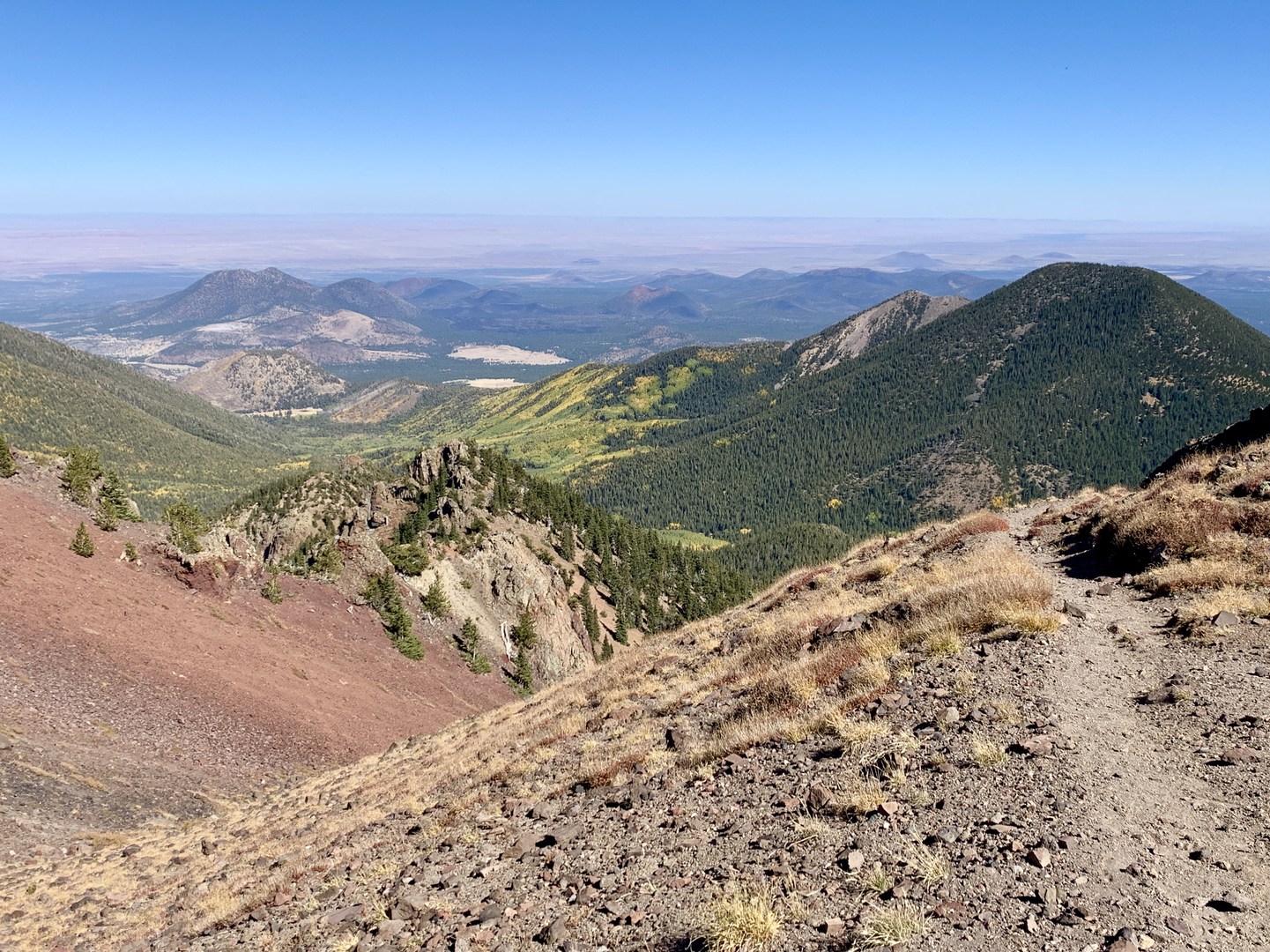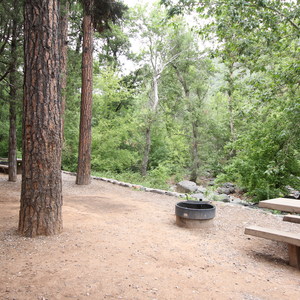You are here
Weatherford is an under-utilized trail on the San Francisco Peaks. Most hikers use the Humphreys Trail to ascend Arizona’s tallest mountain, but the Weatherford Trail is actually more scenic, albeit longer. Rather than beginning from the Arizona Snowbowl ski area like Humphreys Trail, Weatherford begins from Schultz Pass along a dirt road. This road closes in winter, but is generally open May through November.
The first mile and a half of Weatherford Trail is rather uneventful, as it ascends gradually through ponderosa forest with some oak and aspen. Eventually it reaches a meadow with a nice view of the mountain, and you can see the saddle between Fremont and Doyle Peaks where the trail is headed. Across the meadow, the trail enters a cool forest of tall aspens and mixed conifer, and soon enters the Kachina Peaks Wilderness, marked by a sign.
Weatherford Trail was originally a road built for vehicles to ascend the San Francisco Peaks, but it’s now for hiking only. Rocks have been moved to narrow the path, but you can tell how wide it once was, and the grade is rather gradual, just as a road would be. As this trail continues upward, it stays mostly in the forest but emerges often into hillside meadows, granting amazing views over the Schultz Pass area and Mount Elden.
Though it’s never too steep, the trail steadily climbs nearly 3,000 feet of elevation in less than 7 miles to reach Fremont Saddle. This is the first of 3 passes that the trail meets, all of which are located on the U-shaped crest of the San Francisco Peaks. From Fremont Saddle you can see over the aspen-filled Inner Basin and across to Humphreys Peak. This saddle makes a good turnaround point if you aren’t up for the full trek, or if weather is turning bad. The high elevations are no place to be during thunderstorms, which commonly pop up on summer afternoons. During spring and early summer, there could still be snow and ice covering the trail by this point, so traction devices may be necessary for safety.
Continuing past Fremont Saddle, the trail traverses beneath Fremont Peak, crossing a wide, rocky gully which is actually an avalanche path. The trail meanders among bouldery terrain and conifer forest, with frequent views over the basin and the peaks. This section is mostly flat, but then a few upward switchbacks lead to the second saddle, called Doyle Saddle. There you’ll find rusty metal relics of a camp, probably set up on the Weatherford Road long ago. This saddle is another good turnaround point, because from there the trail breaks above treeline, with no more shelter from the elements.
The next section makes a broad zigzag up the east face of Agassiz Peak, which is the second tallest after Humphreys. From this well-worn path on open talus slopes, you’ll get the best views yet over the basin and out to the Painted Desert beyond. The trail weaves among some jagged lava rock formations, evidence that this ring of peaks is actually an ancient volcanic crater.
Eventually the trail crosses over the shoulder of Agassiz Peak, and you’ll get views down the other side, toward the ski resort. A brief descent leads to the third saddle and the junction with Humphreys Trail. Here, at 11,800 feet in elevation, is where Weatherford Trail officially ends, after 11 miles and more than 4000 feet of uphill. If you still have it in you, you can take on the additional 1 mile and 800 feet of difficult trail to the summit of Humphreys, but remember that you still have to get all the way down!
Hiking all of Weatherford Trail is a challenging and rewarding day, but requires ample preparation. There is no reliable water source on the trail, and the high elevations can bring extreme weather. Expect intense sun, chilly wind, and rapidly changing conditions, especially during the summer monsoon season. Bring layers of clothing, plenty of water and food, and your best judgement in order to tackle this alpine trek on the roof of Arizona.









Comments
Sign In and share them.